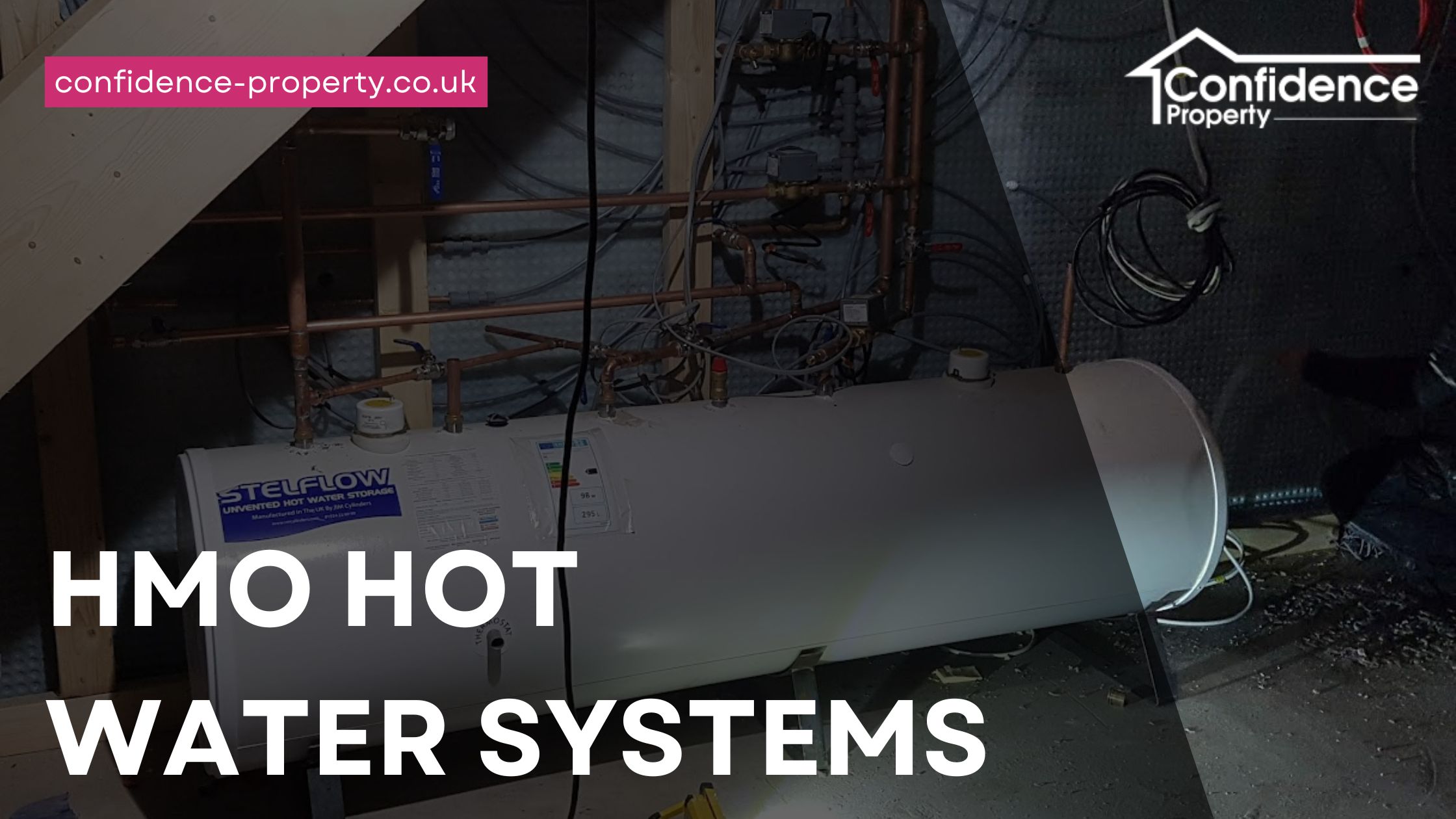As an HMO landlord, ensuring that your properties have efficient and reliable hot water systems is crucial. Properly managing hot water and heating can significantly impact your tenants’ satisfaction and your operating costs. Here’s a detailed guide on hot water systems suitable for HMOs, informed by industry best practices and expert advice.
Hot water is a vital component in any household, and in HMOs, the demand is even higher due to multiple occupants. Inefficient systems can lead to increased energy bills and disgruntled tenants. Here’s what you need to know about different types of hot water systems and their suitability for HMOs.
TYPES OF HMO HOT WATER SYSTEMS
GAS
- Advantages: Gas boilers are generally the most cost-effective way to heat water and provide heating. They are less expensive to operate compared to electric systems.
- Disadvantages: While gas boilers are efficient, they are being phased out in the UK due to environmental concerns. Additionally, standard combi boilers may not suffice for HMOs as they struggle with simultaneous demand for hot water.
Combi Boilers
- Advantages: These boilers provide hot water on demand without the need for a storage tank.
- Disadvantages: They are not ideal for HMOs due to their limited capacity to supply multiple showers simultaneously. Upgraded models are necessary for larger demands, but they can still result in erratic water temperatures if water is drawn from multiple outlets.
Pressurised Systems (Unvented Systems)
- Advantages: These systems, such as the “Megaflo,” store hot water at mains pressure, ensuring a strong and consistent flow. They are ideal for properties with multiple bathrooms as they maintain pressure even when multiple taps are in use.
- Disadvantages: Installation costs are higher, and they require a minimum water pressure to function efficiently. Annual maintenance is necessary to keep the system in good working condition.
ELECTRIC
- Advantages: Electric showers are easy to install and can provide hot water on demand.
- Disadvantages: These units are very energy-intensive, often running at around 14KW. This can lead to high electricity bills and potential issues with electrical circuit capacity.
ENHANCING WATER FLOW RATES
- Flow Rates: The water flow rate is critical in determining how many showers and taps can run simultaneously without a pressure drop. You can measure this using a simple device.
- Increasing Supply: Upgrading the main water supply pipes to 25mm or 32mm can significantly improve the flow rate, ensuring sufficient water supply for all occupants.
ADDITIONAL CONSIDERATIONS FOR HMO HOT WATER SYSTEMS
- Accumulator Tanks: These tanks store cold water and help maintain pressure by supplying water to the hot water tank when mains pressure is low. This prevents interruptions during high-demand periods.
- Eco-Showerheads: Installing eco-showerheads can reduce water usage to around 6 litres per minute compared to the standard 12-20 litres. This not only conserves water but also reduces energy costs.
Conclusion
Selecting the right hot water system for your HMO can improve tenant satisfaction and reduce operational costs. While initial investments in systems like unvented hot water systems may be higher, their long-term benefits in efficiency and reliability make them a worthy consideration. Always ensure regular maintenance to keep these systems running smoothly and effectively.
By staying informed and making strategic decisions about your hot water systems, you can enhance the living experience for your tenants and manage your properties more efficiently.
At Confidence Property our priority is the profitability of your asset.
Get in touch if you need any HMO advice or help!






